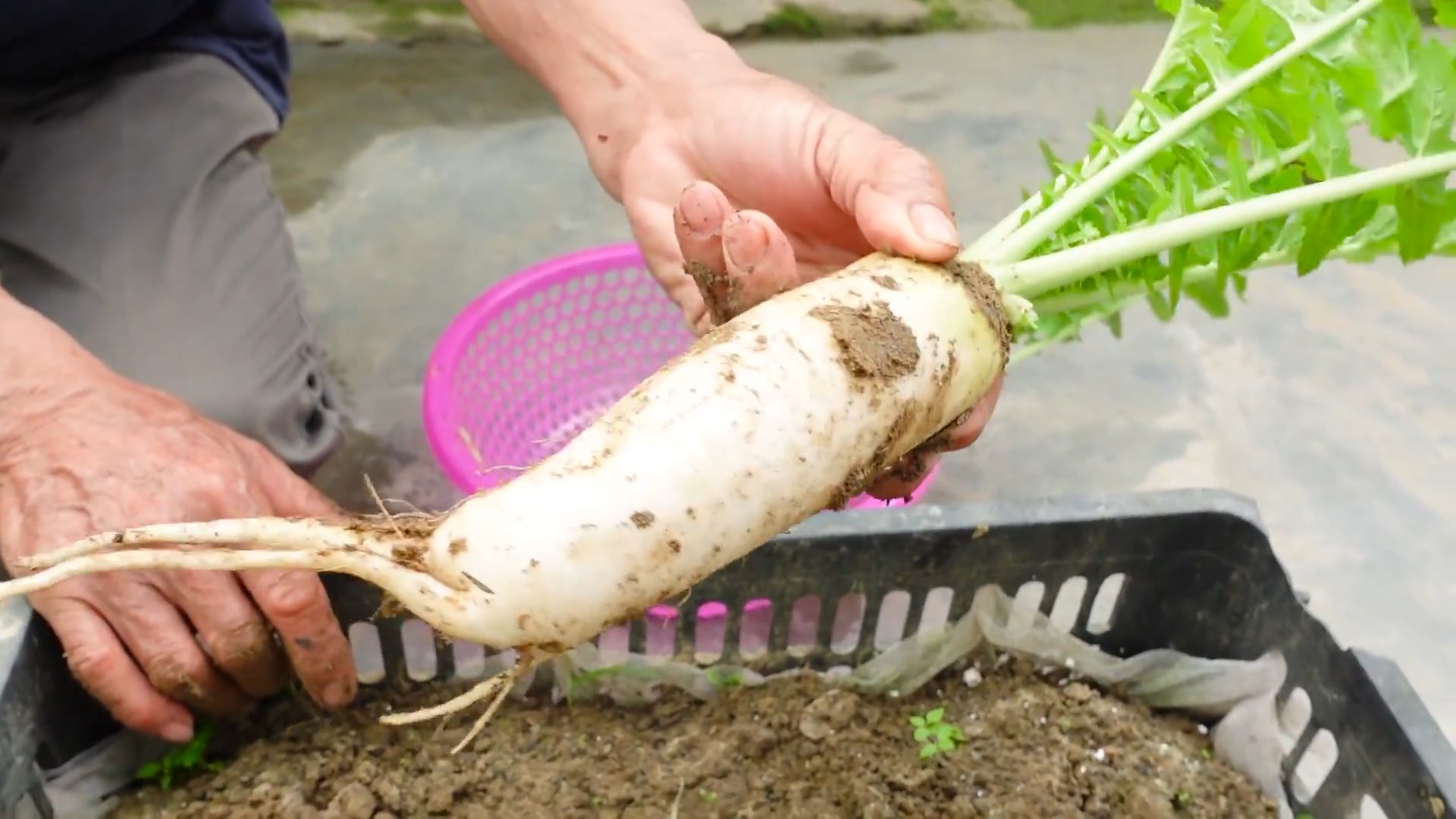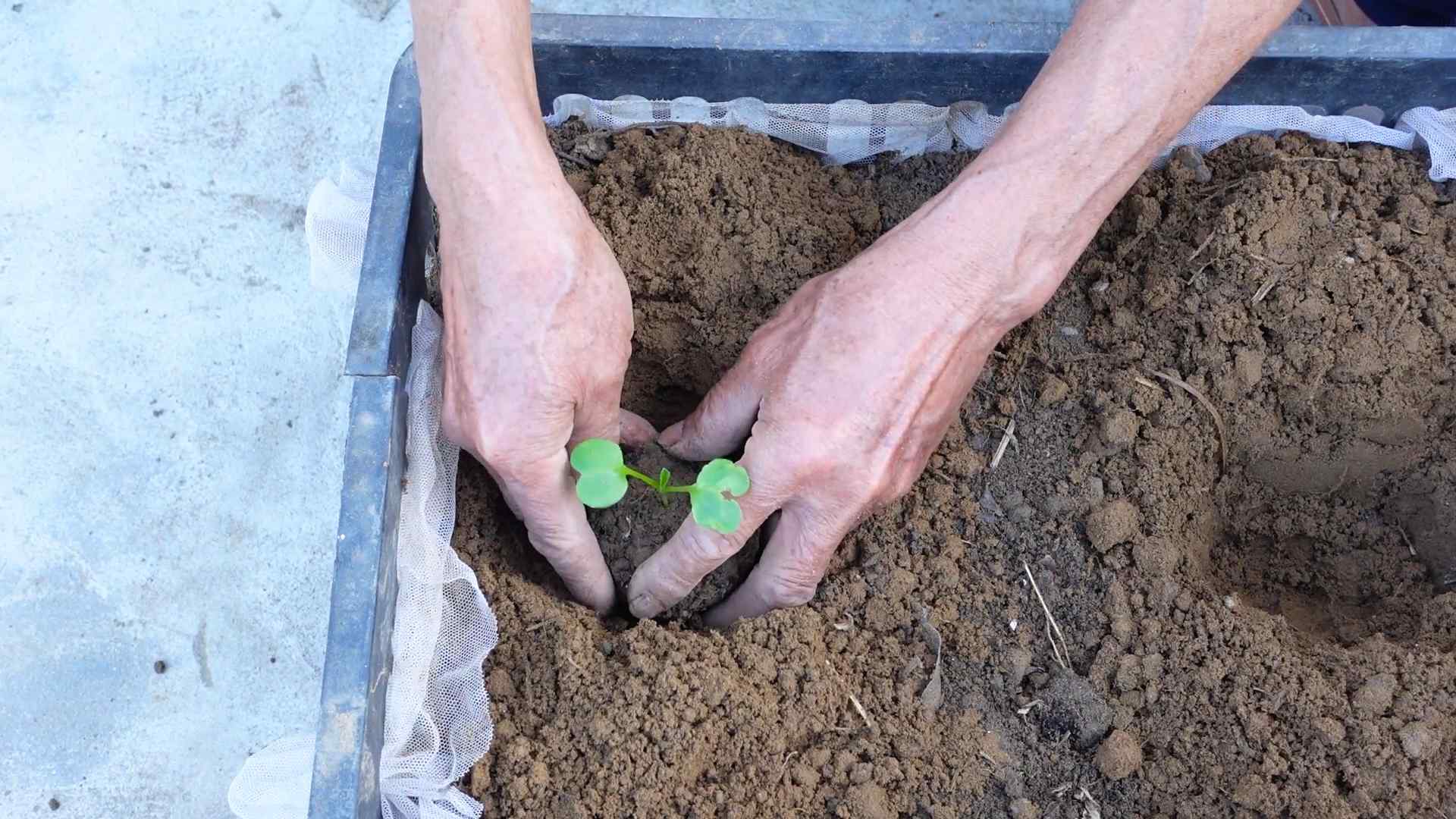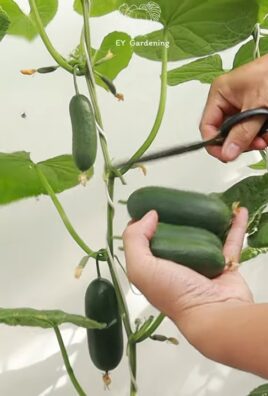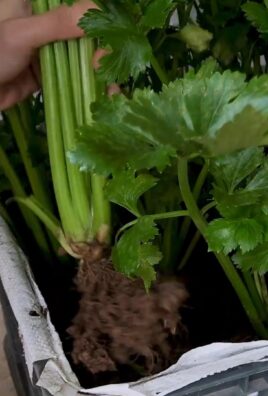Grow Radish at Home? Absolutely! Imagine plucking crisp, peppery radishes straight from your own backyard, adding a vibrant crunch to your salads and snacks. It’s easier than you think, and this DIY guide will show you exactly how to make it happen, even if you’re a complete beginner. Forget those bland, store-bought radishes – we’re talking about homegrown flavor explosions!
Radishes have a surprisingly rich history, dating back to ancient times. They were cultivated in Egypt before the pyramids were even built! Throughout history, they’ve been valued not only for their taste but also for their medicinal properties. Now, you can continue this tradition by cultivating your own little radish patch.
Why should you learn this DIY trick? Well, for starters, growing your own food is incredibly rewarding. Plus, store-bought radishes can sometimes be disappointing – either too mild or too bitter. When you grow radish at home, you have complete control over the variety and growing conditions, ensuring a perfect harvest every time. This guide will provide you with simple, effective hacks to overcome common challenges and enjoy a bountiful radish crop. Let’s get started!

Grow Radishes at Home: A Beginner’s Guide
Hey there, fellow gardening enthusiasts! Ever wanted to grow your own crunchy, peppery radishes right in your backyard (or even on your balcony)? Well, you’ve come to the right place! Radishes are super easy and fast-growing, making them perfect for beginners like us. I’m going to walk you through everything you need to know to get a bountiful harvest of these little root veggies. Let’s get our hands dirty!
What You’ll Need
Before we dive into the planting process, let’s gather our supplies. Here’s a list of everything you’ll need:
- Radish Seeds: Choose your favorite variety! There are tons of options, from the classic red globe radishes to French Breakfast radishes and even colorful varieties like Easter Egg radishes.
- Potting Soil (if planting in containers): A well-draining potting mix is essential for healthy radish growth.
- Garden Soil (if planting in the ground): Make sure your soil is loose, fertile, and well-draining. Amend with compost if needed.
- Gardening Gloves: Protect your hands from dirt and potential irritants.
- Hand Trowel or Garden Fork: For preparing the soil and planting seeds.
- Watering Can or Hose: For watering your radishes regularly.
- Fertilizer (optional): A balanced fertilizer can give your radishes a boost, but it’s not always necessary.
- Container (if planting in containers): Choose a container that is at least 6 inches deep.
Choosing the Right Location
Radishes are pretty adaptable, but they do have some preferences. Here’s what to keep in mind when choosing a location:
- Sunlight: Radishes need at least 6 hours of sunlight per day. A sunny spot in your garden or on your balcony is ideal.
- Soil: As I mentioned before, well-draining soil is crucial. Radishes don’t like to sit in soggy soil.
- Temperature: Radishes prefer cooler temperatures, ideally between 50°F and 65°F. This makes them a great crop for spring and fall.
Planting Radishes: Step-by-Step
Okay, now for the fun part! Let’s get those radish seeds in the ground.
- Prepare the Soil: Whether you’re planting in a container or in the ground, start by preparing the soil. If you’re using a container, fill it with potting mix. If you’re planting in the ground, use a hand trowel or garden fork to loosen the soil and remove any rocks or debris. Amend the soil with compost if needed to improve drainage and fertility.
- Sow the Seeds: Radish seeds are small, so you don’t need to plant them too deep. Sow the seeds about ½ inch deep and 1 inch apart. If you’re planting in rows, space the rows about 6 inches apart. I like to make a small furrow with my finger, drop the seeds in, and then gently cover them with soil.
- Water Gently: After planting, water the soil gently to moisten it. Be careful not to wash away the seeds. A watering can with a gentle rose head is perfect for this.
- Thin Seedlings (if necessary): Once the seedlings emerge (usually within a few days), you may need to thin them out. This means removing some of the seedlings so that the remaining ones have enough space to grow. Aim for a final spacing of about 2 inches between plants. I know it’s hard to pull out those tiny seedlings, but it’s important for getting a good harvest!
Caring for Your Radishes
Now that your radishes are planted, it’s time to take care of them. Here’s what you need to do:
- Water Regularly: Radishes need consistent moisture to grow quickly and develop a good flavor. Water them regularly, especially during dry spells. The soil should be moist but not soggy. I usually check the soil moisture every day and water when the top inch feels dry.
- Weed Carefully: Keep the area around your radishes free of weeds. Weeds can compete with your radishes for water and nutrients. Be careful when weeding so you don’t disturb the radish roots.
- Fertilize (optional): If you want to give your radishes a boost, you can fertilize them with a balanced fertilizer. Follow the instructions on the fertilizer package. I usually fertilize my radishes about two weeks after they emerge.
Dealing with Pests and Diseases
Radishes are generally pretty pest-resistant, but there are a few things to watch out for:
- Flea Beetles: These tiny beetles can chew small holes in the leaves of your radishes. You can control them by covering your plants with row covers or by spraying them with insecticidal soap.
- Root Maggots: These pests can tunnel into the roots of your radishes, causing them to rot. You can prevent root maggots by covering your plants with row covers or by rotating your crops each year.
- Clubroot: This fungal disease can cause the roots of your radishes to become swollen and distorted. You can prevent clubroot by improving soil drainage and by avoiding planting radishes in the same spot year after year.
If you notice any signs of pests or diseases, take action quickly to prevent them from spreading.
Harvesting Your Radishes
This is the moment we’ve been waiting for! Radishes are ready to harvest in as little as 3-4 weeks after planting, depending on the variety.
- Check for Size: The best way to tell if your radishes are ready to harvest is to check their size. Most radish varieties are ready to harvest when they are about 1 inch in diameter.
- Pull Them Up: To harvest your radishes, simply pull them up from the ground. If the soil is dry, you may need to loosen it with a hand trowel first.
- Wash and Enjoy: Wash your radishes thoroughly and enjoy them fresh. They’re delicious in salads, sandwiches, or as a crunchy snack.
Important Tip: Don’t let your radishes get too big, or they will become woody and bitter. Harvest them as soon as they are ready.
Succession Planting for a Continuous Harvest
Want to enjoy fresh radishes all season long? Try succession planting! This means planting a new batch of radishes every 1-2 weeks. This way, you’ll have a continuous supply of radishes to harvest.
Troubleshooting Common Problems
Even with the best care, you might encounter a few problems along the way. Here are some common issues and how to fix them:
- Radishes are not forming bulbs: This is usually caused by overcrowding, lack of sunlight, or poor soil. Make sure your radishes are spaced properly, getting enough sunlight, and growing in well-draining soil.
- Radishes are cracking: This is often caused by inconsistent watering. Make sure you’re watering your radishes regularly, especially during dry spells.
- Radishes are too spicy: This can be caused by hot weather or letting the radishes grow too large. Harvest your radishes when they are young and tender, and try planting them in a shadier location during hot weather.
Radish Varieties to Try
There are so many different radish varieties to choose from! Here are a few of my favorites:
- Cherry Belle: A classic red globe radish that’s easy to grow and has a mild flavor.
- French Breakfast: A long, slender radish with a mild, slightly sweet flavor.
- Easter Egg: A mix of colorful radishes in shades of red, pink, purple, and white.
- Black Spanish: A large, black radish with a strong, pungent flavor.
- Watermelon Radish: A beautiful radish with a green exterior and a bright pink interior.
Experiment with different varieties to find your favorites!
Using Radish Greens
Don’t throw away those radish greens! They’re edible and nutritious. You can use them in salads, soups, or stir-fries. They have a slightly peppery flavor, similar to the radishes themselves. Just make sure to wash them thoroughly before using them.
Storing Radishes
To store radishes, remove the greens and store the radishes in a plastic bag in the refrigerator. They will keep for about a week. You can also store radish greens in a separate plastic bag in the refrigerator. They will keep for a few days.
Final Thoughts
Growing radishes is a rewarding experience. They’re easy to grow, fast-growing

Conclusion
So, there you have it! Growing radishes at home is not only incredibly simple, but it’s also a remarkably rewarding experience. Forget those bland, store-bought radishes that lack that peppery zing. With just a few basic supplies and a little bit of patience, you can cultivate a vibrant crop of crisp, flavorful radishes right in your own backyard, balcony, or even on a sunny windowsill.
Why is this DIY trick a must-try? Because it puts you in control. You control the soil, the watering, and the overall environment, resulting in radishes that are bursting with freshness and flavor. Plus, it’s incredibly satisfying to harvest something you’ve nurtured from seed to table. Imagine the pride you’ll feel serving up a salad featuring radishes you grew yourself!
But the fun doesn’t stop there. Experiment with different varieties of radishes to discover your favorites. Try French Breakfast radishes for their mild flavor and elongated shape, or go bold with Black Spanish radishes for a more intense, spicy kick. You can even plant a succession of crops, sowing new seeds every few weeks, to ensure a continuous supply of fresh radishes throughout the growing season.
Consider companion planting to enhance your radish garden. Carrots and radishes are excellent companions, as radishes help deter pests that might attack the carrots. Lettuce and spinach also thrive alongside radishes, creating a diverse and productive garden bed.
For those with limited space, container gardening is an excellent option. Choose a container that is at least 6 inches deep and wide, and fill it with a well-draining potting mix. Radishes are relatively shallow-rooted, so they don’t require a huge amount of space. Just be sure to provide them with plenty of sunlight and water.
Don’t be afraid to get your hands dirty and experiment. Gardening is a learning process, and even experienced gardeners encounter challenges along the way. The key is to be patient, observant, and willing to adapt your approach as needed.
We are confident that you’ll find growing radishes at home to be a fun, easy, and rewarding experience. So, grab some seeds, prepare your soil, and get ready to enjoy the delicious taste of homegrown radishes.
We encourage you to try this DIY trick and share your experience with us! Let us know what varieties you planted, what challenges you encountered, and what tips you discovered along the way. Share your photos and stories on social media using #HomegrownRadishes and inspire others to join the fun. We can’t wait to see what you create! This simple guide will help you master the art of growing radish at home.
Frequently Asked Questions (FAQ)
What is the best time of year to plant radishes?
Radishes are cool-season crops, meaning they thrive in cooler temperatures. The best time to plant radishes is in early spring or late summer/early fall. In spring, plant them as soon as the soil can be worked. In late summer/early fall, plant them about 4-6 weeks before the first expected frost. Avoid planting radishes during the hottest months of summer, as they tend to bolt (go to seed) in high temperatures.
How much sunlight do radishes need?
Radishes need at least 6 hours of sunlight per day to grow properly. Choose a location that receives full sun for the best results. If you’re growing radishes indoors, place them near a sunny window or use grow lights to supplement the natural light.
What kind of soil is best for radishes?
Radishes prefer loose, well-draining soil that is rich in organic matter. Amend heavy clay soil with compost or other organic materials to improve drainage and aeration. A slightly acidic to neutral soil pH (6.0-7.0) is ideal. Before planting, work the soil to a depth of at least 6 inches to ensure that the radishes have room to develop.
How often should I water radishes?
Radishes need consistent moisture to grow quickly and prevent them from becoming tough or bitter. Water them regularly, especially during dry periods. Aim to keep the soil consistently moist but not waterlogged. A good rule of thumb is to water deeply once or twice a week, depending on the weather conditions.
How long does it take for radishes to mature?
One of the great things about radishes is that they mature very quickly. Most varieties are ready to harvest in just 3-4 weeks after planting. Check the seed packet for the specific maturity time of the variety you are growing.
How do I know when radishes are ready to harvest?
Radishes are ready to harvest when their roots reach the size specified on the seed packet. Gently loosen the soil around the radish and pull it out of the ground. If the radish is too small, leave it in the ground for a few more days. If it’s too large, it may become tough and bitter.
Why are my radishes cracking?
Radish cracking is often caused by inconsistent watering. If the soil dries out and then is suddenly saturated with water, the radishes can swell too quickly, causing them to crack. To prevent cracking, water radishes regularly and consistently, especially during dry periods.
Why are my radishes all tops and no bottoms?
This can be caused by several factors, including:
* **Too much nitrogen:** Excessive nitrogen in the soil can promote leafy growth at the expense of root development. Avoid using fertilizers that are high in nitrogen.
* **Overcrowding:** If the radishes are planted too close together, they may not have enough room to develop properly. Thin the seedlings to the recommended spacing.
* **Poor soil:** Compacted or nutrient-poor soil can also hinder root development. Amend the soil with compost or other organic materials to improve its structure and fertility.
* **Hot weather:** High temperatures can cause radishes to bolt (go to seed), which can also result in poor root development.
What are some common pests and diseases that affect radishes?
Radishes are generally pest-resistant, but they can be susceptible to certain pests and diseases, including:
* **Flea beetles:** These tiny beetles can chew small holes in the leaves of radishes. Cover the plants with row covers to prevent flea beetle damage.
* **Root maggots:** These larvae feed on the roots of radishes, causing them to become stunted and deformed. Rotate crops to prevent root maggot infestations.
* **Clubroot:** This fungal disease can cause the roots of radishes to become swollen and distorted. Plant disease-resistant varieties and avoid planting radishes in the same location year after year.
Can I eat radish greens?
Yes, radish greens are edible and nutritious! They have a peppery flavor similar to the radish root. You can use radish greens in salads, soups, stir-fries, or as a garnish. Be sure to wash them thoroughly before using.
How do I store radishes?
To store radishes, remove the greens and store them separately. Place the radishes in a plastic bag or container in the refrigerator. They will keep for up to 2 weeks. Radish greens should be used within a few days.
Can I grow radishes in containers?
Yes, radishes are well-suited for container gardening. Choose a container that is at least 6 inches deep and wide, and fill it with a well-draining potting mix. Be sure to provide the radishes with plenty of sunlight and water.
What are some good companion plants for radishes?
Radishes are good companion plants for carrots, lettuce, spinach, and other cool-season crops. They can help deter pests and improve soil health. Avoid planting radishes near hyssop.
How do I prevent radishes from becoming too spicy?
The spiciness of radishes is influenced by several factors, including the variety, growing conditions, and time of year. To reduce the spiciness of radishes, harvest them when they are young and tender. Also, be sure to provide them with consistent moisture and avoid planting them during the hottest months of summer. Some varieties are naturally milder than others.
Can I save radish seeds?
Yes, you can save radish seeds, but it requires allowing the radishes to bolt (go to seed). This typically happens in the second year of growth. Allow the seed pods to dry on the plant, then harvest them and extract the seeds. Store the seeds in a cool, dry place. Keep in mind that radishes can cross-pollinate with other radish varieties, so the seeds may not produce plants that are true to type.




Leave a Comment